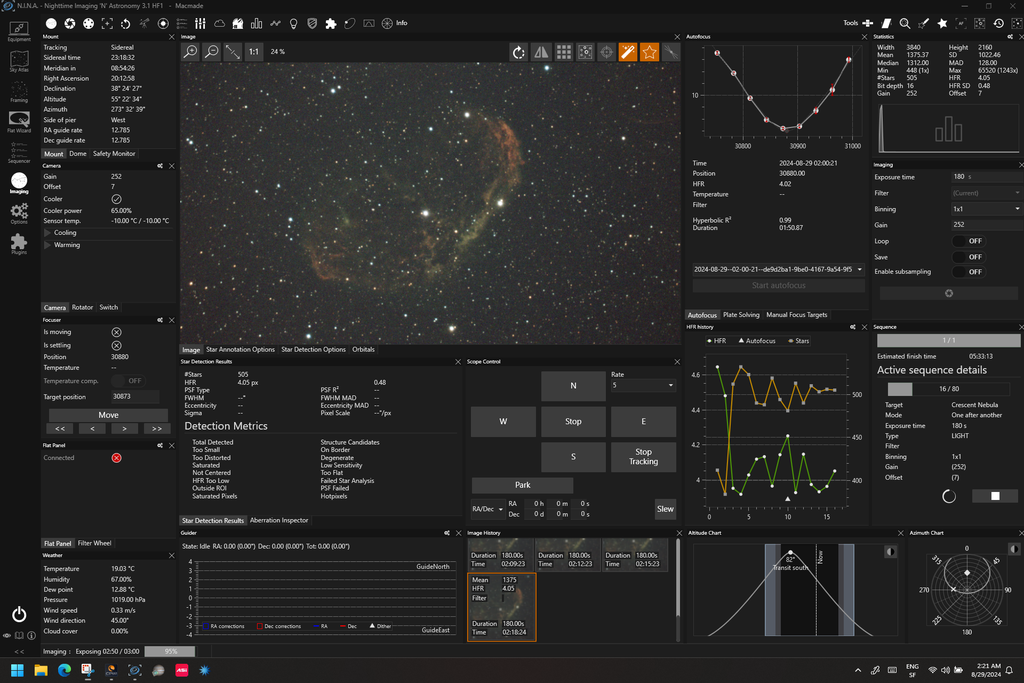I'm still discovering and learning a lot, and I began to pay attention to my HFR values.
However, I wonder if the values I'm observing are within the acceptable range.
My current setup is:
- Celestron NexStar Evolution 6 (1500mm), on a wedge
- ZWO ASI585MC Pro (2.9um)
I have some over-sampling, and I also read that longer focal lengths typically increase HFR values.
Currently, I'm imaging the Crescent Nebula with a 0.63x reducer. My focal length is 945mm.
My average HFR values are around 4.2px with a 3-minute exposure time.
Is it acceptable for my particular setup, or should I aim at a lower HFR?
If so, what can I improve?
Should I improve guiding, take shorter exposures, or use binning?
Thanks a lot for your advice!
CS



